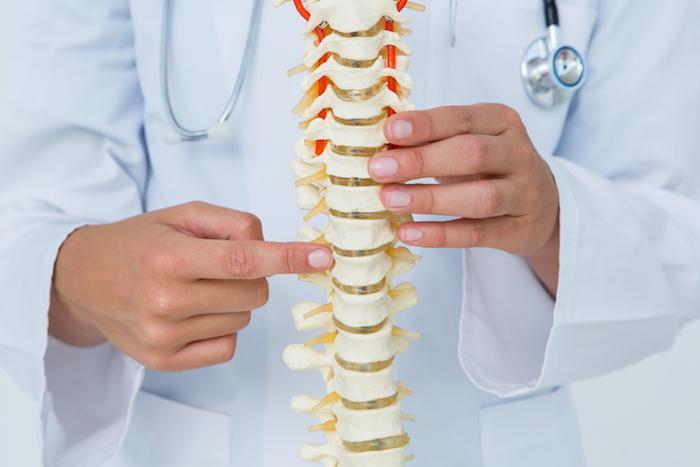Spinal health is a cornerstone of overall wellness, yet millions of adults experience chronic back pain that can significantly affect their quality of life. The good news is that not every spinal issue requires invasive surgery. With advances in diagnostic tools, physical therapy techniques, and minimally invasive interventions, patients now have a spectrum of non-surgical options to manage pain, restore function, and prevent further complications. Mountain West Spine is at the forefront of providing comprehensive spine care that prioritizes conservative treatments whenever appropriate, offering patients a balanced approach between non-invasive strategies and surgical solutions when truly necessary.
Understanding when to rely on non-surgical care versus considering surgical intervention requires knowledge, careful assessment, and collaboration between patients and healthcare professionals. In this article, we explore best practices for non-surgical spine care, the role of emerging therapies, and the critical factors that signal when surgery becomes the optimal choice.
The Foundation of Non-Surgical Spine Care
Non-surgical spine care focuses on alleviating pain, improving mobility, and enhancing quality of life without the need for operative procedures. At the heart of these approaches is a personalized treatment plan that addresses the root cause of discomfort rather than merely masking symptoms. Common non-surgical interventions include physical therapy, targeted exercise regimens, postural training, medication management, and ergonomic adjustments.
Physical therapy remains a cornerstone of non-invasive treatment. Through a combination of stretching, strengthening, and core stabilization exercises, patients can relieve pressure on the spine, reduce inflammation, and regain functional mobility. Physical therapists often incorporate education on proper body mechanics, teaching patients how to prevent recurrent injuries during daily activities, lifting, or prolonged sitting.
Chronic pain management may also involve medications, such as non-steroidal anti-inflammatory drugs (NSAIDs) or muscle relaxants, though these are usually short-term solutions. In certain cases, advanced therapies like epidural steroid injections or nerve block treatments can provide targeted relief while patients pursue long-term rehabilitation strategies.
Lifestyle Modifications That Support Spinal Health
While clinical treatments are essential, lifestyle factors play a crucial role in both preventing and managing spine-related conditions. Maintaining a healthy weight reduces strain on the lumbar spine, while regular aerobic exercise enhances blood flow and promotes healing. Activities such as swimming, yoga, and walking are particularly beneficial for strengthening supportive muscles without placing undue stress on the spine.
Equally important is posture and ergonomics. In modern work environments, prolonged sitting can exacerbate spinal issues, leading to chronic neck and back pain. Simple adjustments, such as proper desk height, supportive chairs, and regular breaks to stretch and move, can dramatically reduce discomfort over time.
Nutrition also contributes to spinal health. Diets rich in calcium, vitamin D, and anti-inflammatory nutrients support bone strength and minimize degeneration, while hydration ensures intervertebral discs remain supple and functional. By combining clinical care with lifestyle modifications, patients often experience substantial improvement in both pain and function, frequently avoiding the need for surgery altogether.
Emerging Non-Surgical Therapies
Innovations in spine care have expanded the non-surgical toolkit. Minimally invasive procedures, regenerative medicine, and advanced imaging technologies are transforming how physicians diagnose and treat spinal disorders. Platelet-rich plasma (PRP) injections, stem cell therapy, and other regenerative approaches are being studied for their potential to accelerate healing of damaged tissues while minimizing risks associated with traditional surgery.
Additionally, technological advancements in imaging, including MRI and CT scans, allow for precise assessment of spinal structures, helping clinicians tailor interventions more accurately. Non-surgical spine specialists can use these insights to identify early signs of degeneration, nerve compression, or other pathologies that may respond well to conservative measures before surgery becomes necessary.
Recognizing When Surgery Is Necessary
Despite the wide array of non-surgical options, surgery remains a critical tool in certain cases. Understanding when to operate requires careful evaluation of symptom severity, functional impairment, and the potential for irreversible damage. Common indicators include progressive neurological deficits, such as weakness, numbness, or loss of bowel and bladder control, which may signal nerve compression that could worsen without surgical intervention.
Structural issues like herniated discs, spinal stenosis, or severe scoliosis sometimes necessitate surgical correction when conservative measures fail to provide relief. Importantly, patients should view surgery not as a last resort but as one component of a comprehensive treatment strategy, ideally pursued after thorough consultation with a spine specialist. Mountain West Spine emphasizes shared decision-making, ensuring that patients are fully informed about risks, benefits, and recovery expectations before proceeding.
A Collaborative Approach to Spine Health
Effective spine care requires collaboration among patients, physicians, therapists, and other healthcare professionals. Non-surgical treatments work best when patients are actively engaged in their recovery and committed to lifestyle changes that support long-term spinal health. Regular follow-ups, progress tracking, and adjustments to therapy plans help ensure continued improvement and prevent setbacks.
Moreover, patient education is essential. Understanding spinal anatomy, the mechanics of pain, and the rationale behind various therapies empowers individuals to make informed choices and adhere to treatment plans more consistently. Education also reduces anxiety, helps set realistic expectations, and fosters a sense of control over one’s health outcomes.
Conclusion
Non-surgical spine care offers a highly effective path for managing many back and neck conditions, emphasizing prevention, function, and quality of life. Through physical therapy, lifestyle adjustments, and emerging regenerative therapies, patients can often achieve significant relief without undergoing surgery. However, recognizing the point at which operative intervention becomes necessary is equally critical, particularly in cases of progressive neurological compromise or structural instability.



